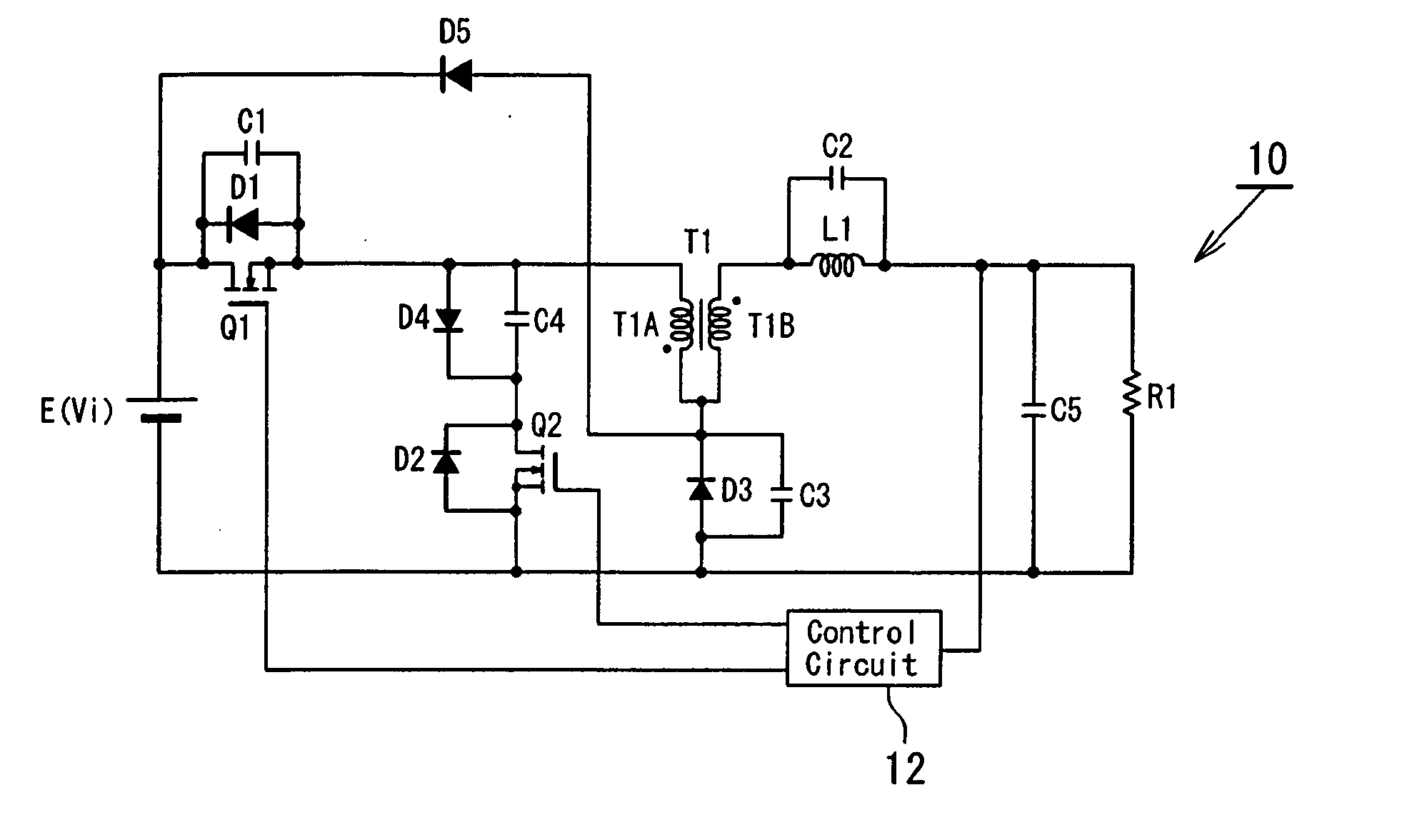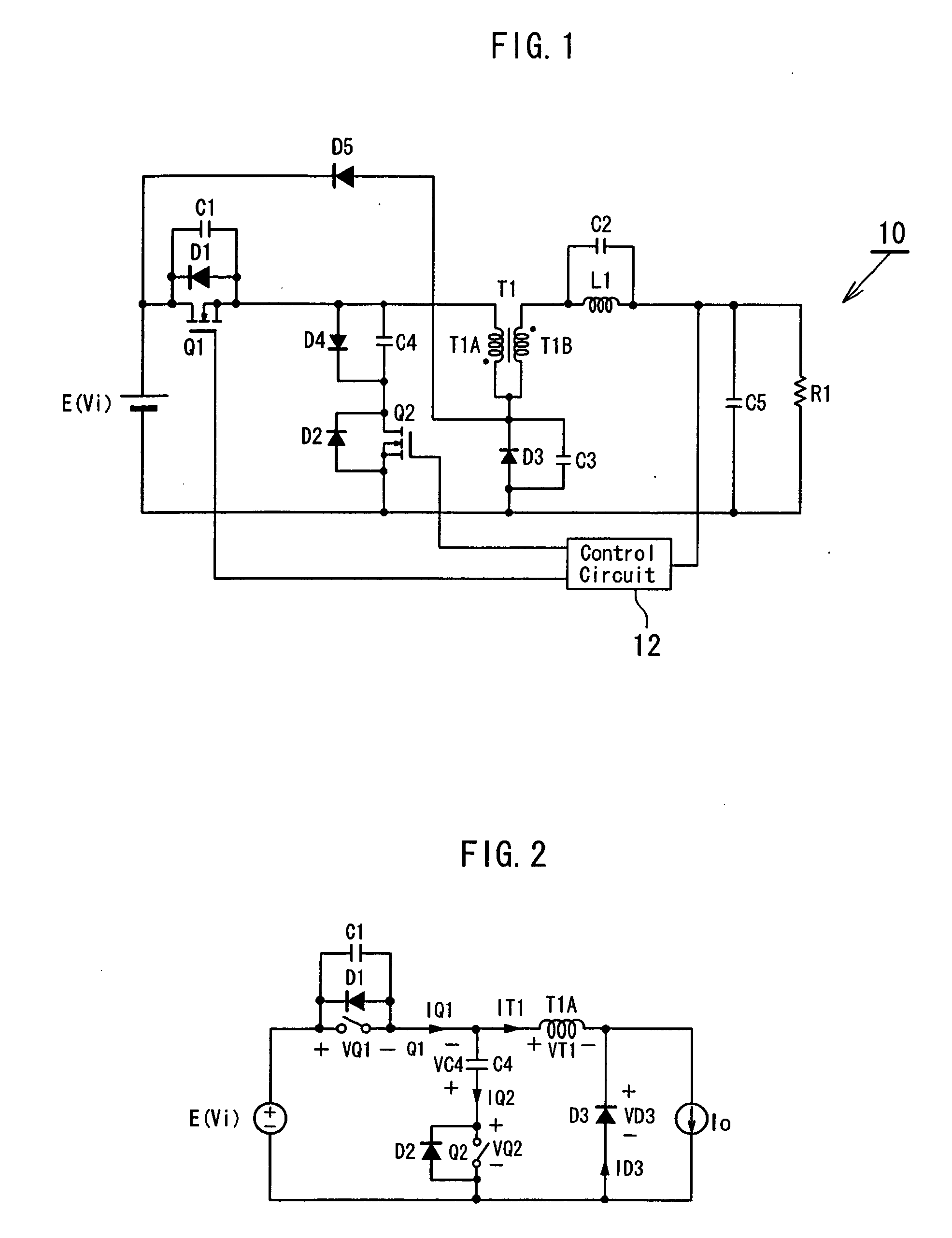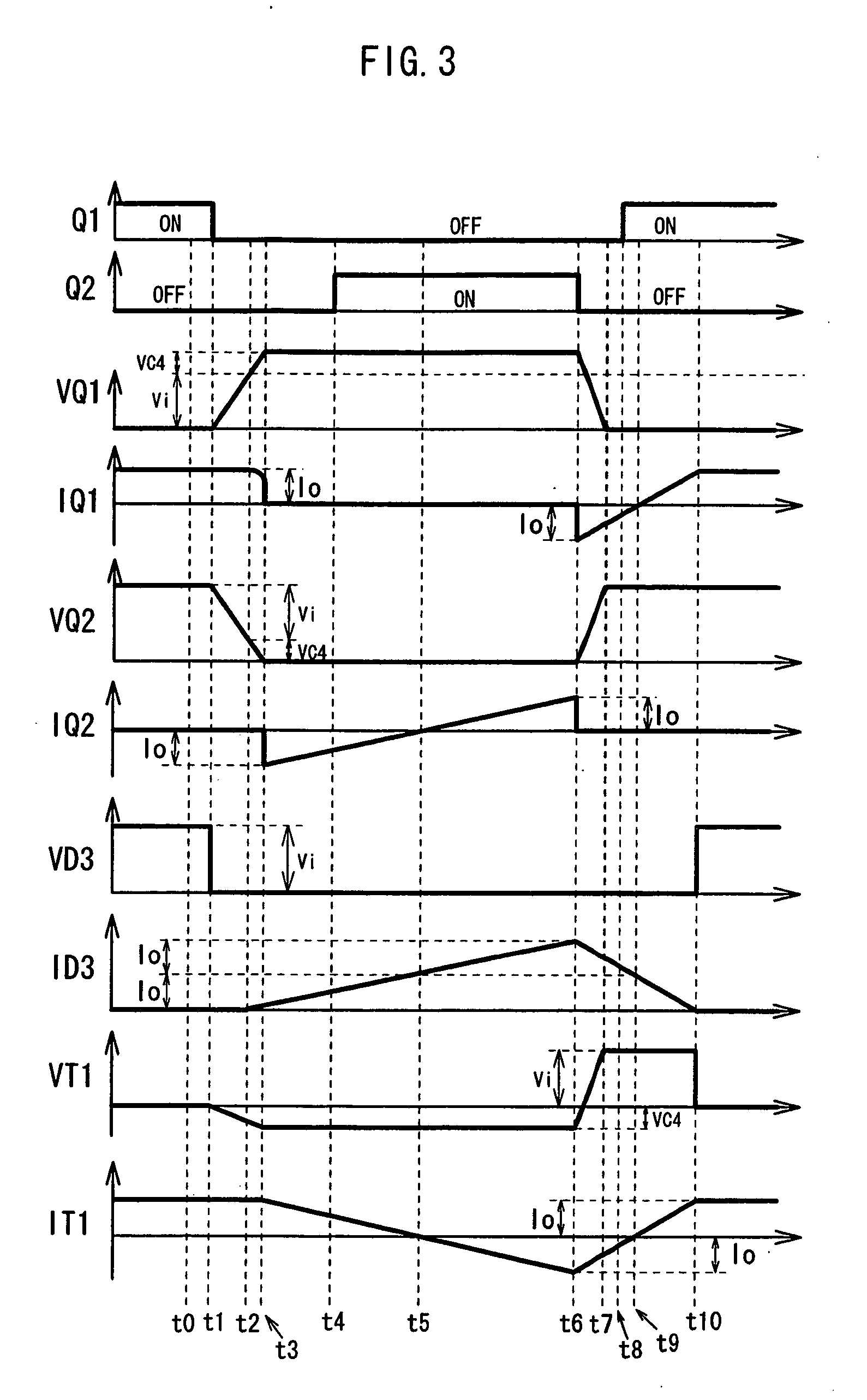DC-DC converter
a converter and dc technology, applied in the direction of electric variable regulation, process and machine control, instruments, etc., can solve the problems of increasing switching loss, inviting a cost increase, and large loss, and achieve the effect of reducing ripple voltage and reducing switching loss
- Summary
- Abstract
- Description
- Claims
- Application Information
AI Technical Summary
Benefits of technology
Problems solved by technology
Method used
Image
Examples
Embodiment Construction
[0039] Preferred embodiments of the present invention will hereinafter be described with reference to the accompanying drawings.
[0040] Referring to Fig. a DC-DC converter 10 according to a first embodiment of the present invention includes a main switching element Q1, a choke coil L1, an output capacitor C5, a rectifier diode D3, a resonance coil T1, an auxiliary switching element Q2, a clamping capacitor C4, and a control circuit 12, wherein E is a power supply with a voltage Vi, and R1 is a resistor as load.
[0041] The main switching element Q1 is preferably constituted by a field effect transistor, and a diode D1 and a capacitor C1 which are connected in parallel to the main switching element Q1 represent a body diode and drain-source junction capacitance, respectively, incorporated in the field effect transistor. The auxiliary switching element Q2 is preferably constituted by a field effect transistor, and a diode D2 connected to the auxiliary switching element Q2 represents a ...
PUM
 Login to View More
Login to View More Abstract
Description
Claims
Application Information
 Login to View More
Login to View More - R&D
- Intellectual Property
- Life Sciences
- Materials
- Tech Scout
- Unparalleled Data Quality
- Higher Quality Content
- 60% Fewer Hallucinations
Browse by: Latest US Patents, China's latest patents, Technical Efficacy Thesaurus, Application Domain, Technology Topic, Popular Technical Reports.
© 2025 PatSnap. All rights reserved.Legal|Privacy policy|Modern Slavery Act Transparency Statement|Sitemap|About US| Contact US: help@patsnap.com



